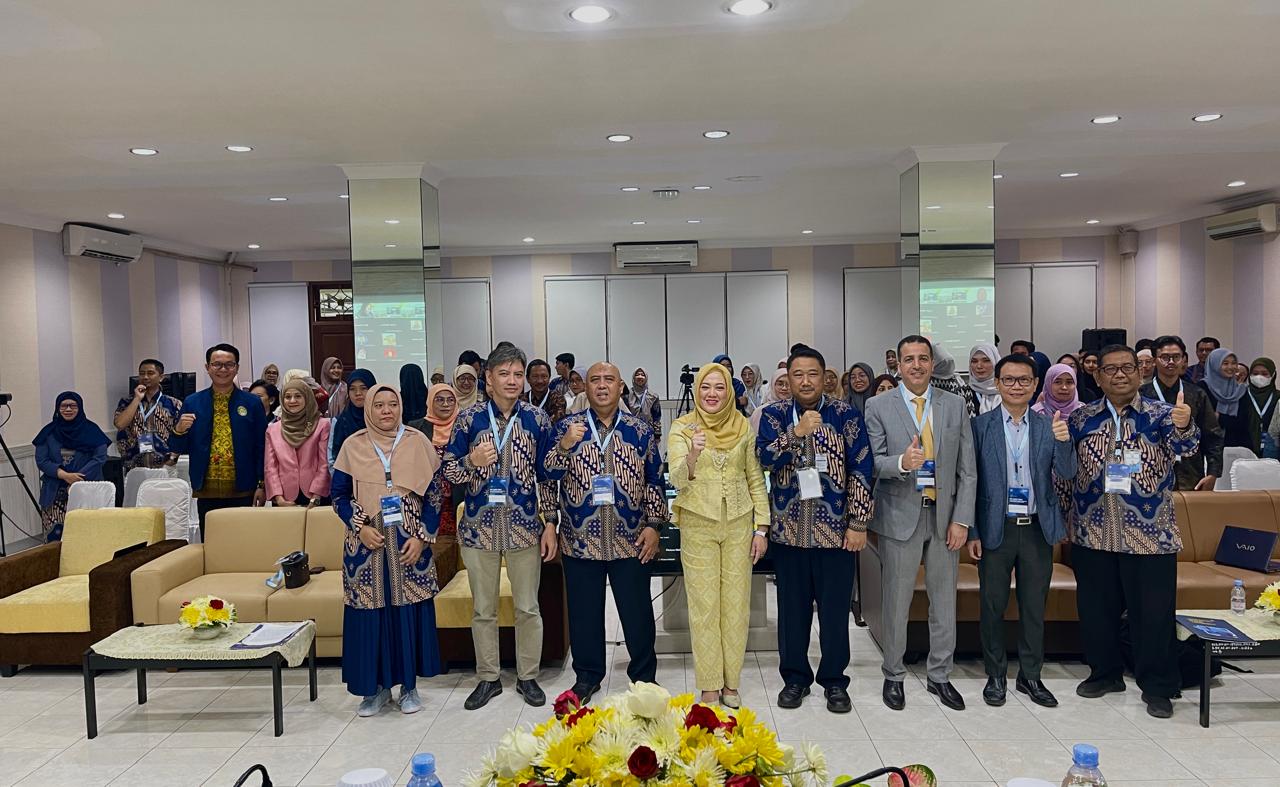 Bahasa Indonesia
Bahasa Indonesia English
English
You are here
FMIPA UNY Holds the 9th International Seminar on Science, Environment and Education (ISSEE) 2024
Primary tabs

FMIPA UNY held The 9th International Seminar in Sciences, Environment, And Education (ISSEE) 2024 on Thursday, 19/9/24 which took place in the faculty meeting room. The seminar presented speaker Dr. Nur Hidayah binti Ahmad from Universiti Teknologi Malaysia, Prof. Ahmad Qoblan from United Arab Emirates University, Dr. Chatree Faikhamta from Kasetsart University, Thailand, and Prof. Ariswan, M. Si. from Yogyakarta State University. Remarks at the opening activity were delivered by Prof. Soni Nopembri, M.Pd., Ph.D. as Deputy Chancellor for Academic and Student Affairs at UNY. Today's seminar serves as a platform to explore how international partnerships can improve the quality of research, with a particular focus on one of the most powerful but often overlooked resources we have namely local and Indigenous knowledge. The integration of local and indigenous wisdom with modern scientific research is very promising for achieving the Sustainable Development Goals (SDGs).It goes on to say, from sustainable agriculture and water management practices to biodiversity conservation and climate resilience, local knowledge systems provide sustainable solutions that have stood the test of time. By incorporating this knowledge into our research, we can create more inclusive and place-based solutions that benefit people and the planet. We hope this conference will be a platform for meaningful dialogue, critical inquiry, and collaborative exploration.Speaker Prof. Ahmad Qablan, Ph.D., from the College of Education, United Arab Emirates University, explained that STEM skills are needed to develop, including clean coal technology, to build new coal-fired power plants with lower carbon emissions. Nuclear engineering to decommission old plants and build new nuclear power plants. Fuel cell technology, fuel cells combine hydrogen and oxygen to produce water, electricity, and heat, a potential alternative energy source. This renewable energy technology produces electricity from renewable sources. Some of the advantages of STEM are that the integration of subject matter makes more sense in real-world applications. There are many content relationships between STEM subject matter. Most products designed and manufactured/built in technology and engineering use scientific principles and laws.
“Some problems with STEM Most teachers have not been educated to teach STEM (either before or during their tenure). Traditional thinking by teachers and administrators is that each subject should be taught separately (or in “silos” or “cognitive compartments/tubes”). Students are taught to score well on “high stakes” national or state tests that are compartmentalized into subject areas such as science, math, etc.” he said.
Meanwhile, Prof. Dr. Ariswan, M.Sc., explained that the development of renewable energy technology that is sustainable in the long term in large quantities through the development of materials engineering must continue to be carried out. Material engineering can increase the conversion efficiency of solar cells, namely converting most of the sun's energy directly into electrical energy. This is a necessity because through research it has been discovered that semiconductor material engineering can determine how wide the energy band gap of a solar cell material is, which is closely related to its ability to absorb solar energy, which is then converted directly into electrical energy. When the wavelength spectrum of sunlight is known with certainty, material engineering can be carried out so that the material is able to absorb most of the sun's energy, which is then converted into electrical energy.
"The principle of tandem system engineering as third generation solar cells is a solution to increase the conversion efficiency of solar cells. Semiconductor material engineering must continue to be studied so that the use of abundant solar energy can be optimized towards world clean energy. "This article briefly outlines how to optimize the use of solar energy that is environmentally friendly, ecologically clean, safe and sustainable, which can actually be realized towards the largest percentage of new renewable energy (EBT) use in the future."

Kontak Kami
Program Studi Pendidikan Fisika
FMIPA Universitas Negeri Yogyakarta
Kampus Karangmalang Yogyakarta 55281
Telepon dan fax (0274) 550847
Email: pend_fisika@uny.ac.id
Copyright © 2025,
